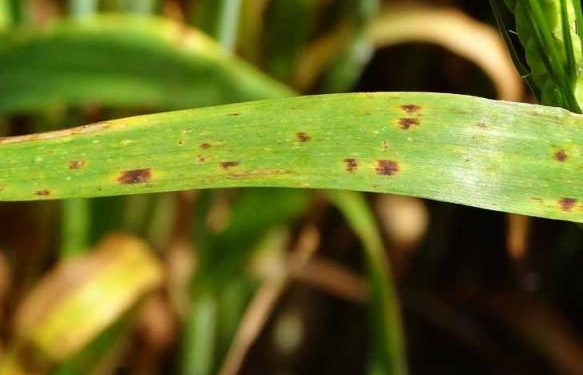Barley is a field crop of increasing importance due to increased resilience to many abiotic stresses of this crop and many health benefits for human health of consumers. But there are a number of barley diasese affecting this field crop and causing significant losses.
One of such a fungal disease of barley is ramularia leaf spot, caused by Ramularia collo-cygni. This disease is seedborne and airborne, although the relative importance of these sources is not well understood.
Typical symptoms of ramularia comprise small, reddish/brown, rectangular lesions, often surrounded by a yellow margin (halo) of chlorosis.
Following high levels of infection, leaves may senesce rapidly. Lesions are often obvious on dead leaves as black spots, with fungal spores visible.
The disease is often associated with other leaf spots, such as abiotic sun scorch, physiological leaf spot, the spot-form of net blotch and spotting caused by damage to the leaf wax following the application of some fungicides.
If the following ‘5Rs’ are associated with mature lesions, it is highly likely to be ramularia:
Reddish/brown colouration.
Rectangular shape.
Restricted by the leaf veins.
Ringed with yellow margin of chlorosis.
Right through the leaf.
With control increasingly difficult, it is essential to recognise the presence of ramularia leaf spot and its severity. Assessments conducted late in the season can inform rotational decisions and reveal the potential risks associated with farm-saved seed. It is important to avoid saving seed for resowing from heavily infected crops.
Source: https://ahdb.org.uk/
Error




